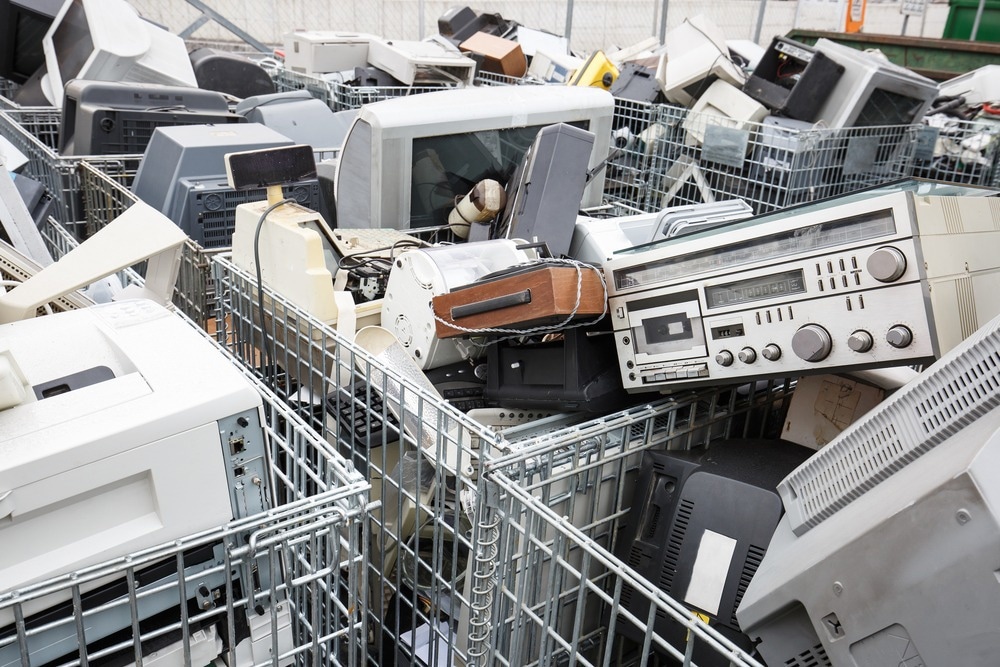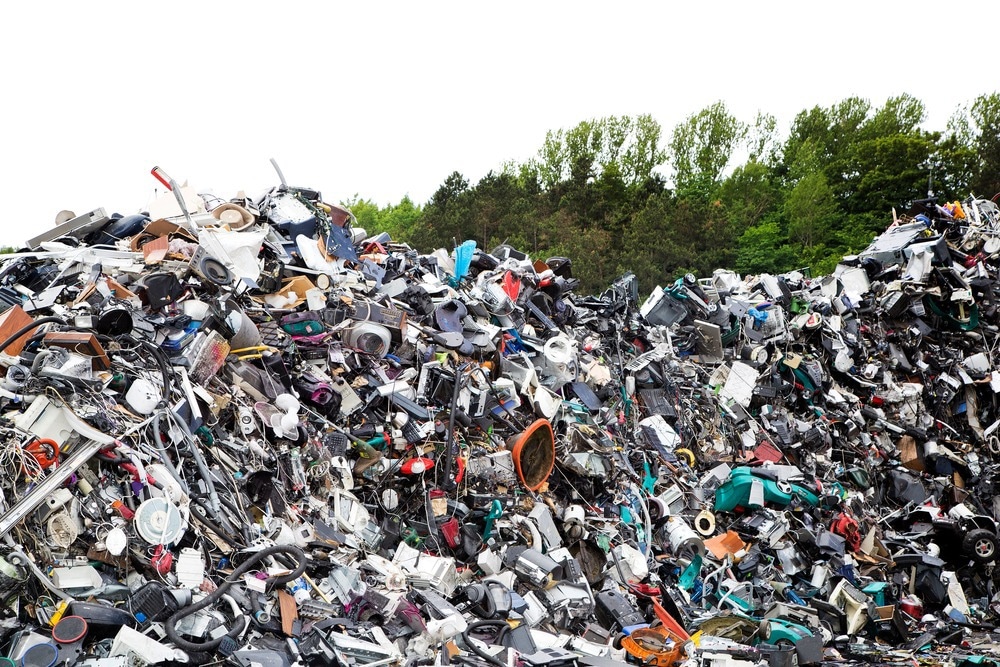Staggering amounts of waste are produced by industrial and domestic activity. Utilizing waste to produce value-added products is a central focus of research, and waste streams are being increasingly utilized in building materials. This article will explore the potential use of e-waste in concrete.

Image Credit: zlikovec/Shutterstock.com
The amount of waste generated globally has increased significantly in recent decades. By 2050, it is predicted that 3.4 billion metric tons of municipal solid waste will be generated globally, a growth of 70% compared to 2022.
Several factors contribute to the generation of waste, including population growth, economic growth, increased industrial activity, and consumer purchasing habits. Significant environmental problems associated with waste generation, such as pollution and climate change, are a major concern for governments worldwide.
Due to the scale of the issue, there is an urgent need for research, regulations, and initiatives to reduce the amount of waste generated. Despite positive progress over the past few decades, however, only around 20% of waste is recycled annually. The majority of solid waste ends up in landfills or is disposed of by incineration.
E-Waste
E-waste in particular is a rapidly growing type of solid waste that increasingly defines the environmental pressures of the electronics industry.
In 2019, global e-waste output amounted to the equivalent weight of 250 cruise ships (around 48.6 million tons). In the US alone, roughly 6.92 million tons were produced in 2019. By March 2022, 9 million tons had been generated.
If consumer habits and industry practices do not change, it is predicted that 120 million tons of e-waste alone will be generated by 2050, significantly hindering internationally-agreed net-zero goals.
E-waste is defined as any type of waste from devices that contain power sources such as batteries or cables. Everyday items like refrigerators, smartphones, laptops, PCs, and televisions are classed as e-waste when they are disposed of.
Waste materials from these devices are especially problematic, as they contain harmful chemicals, heavy metals, and numerous toxins which can cause environmental damage and health risks for communities living near landfill sites. Furthermore, sending e-waste to landfill means that valuable resources contained in devices are lost.
Many countries lack regulations and policies which govern e-waste, presenting major challenges for the electronics sector. There has, however, been some progress in recent decades, such as the EU’s directives on the recycling of waste electrical and electronic equipment.
Using E-waste in the Construction Industry – A Way Forward?
In recent years, there have been intense and wide-ranging conversations around the concept of the circular economy and how it can help to solve key issues around the question of waste, including e-waste.
A circular model of production differs from the current linear model in that it focuses on the recovery of critical materials, recycling, and reuse to produce value-added products. In doing so, companies can recover valuable resources, reduce their carbon footprint, and eliminate waste.

Image Credit: Morten B/Shutterstock.com
One potential use for e-waste which could reduce the growing amount of materials sent to landfill is to use it as an aggregate for concrete, the most widely used construction material in the world.
Cement production accounts for around 7% of global CO2 emissions, making it the third largest individual source of climate change-inducing greenhouse gases. Replacing some or all of the traditional aggregates in cement with waste materials will markedly improve the environmental impact of the global construction industry.
E-waste as a Concrete Aggregate
A 2019 study published online in the journal AIP Conference Proceedings demonstrated the successful use of inert e-waste, which comprises non-harmful, obsolete, malfunctioning, and discarded electronic and electrical waste materials, as coarse aggregates for concrete mixtures.
Various proportions of e-waste aggregates incorporated into M20-grade concrete were investigated by the researchers (up to 25%). Different-sized e-waste particles were investigated for their influence on the mechanical properties of final mixtures such as compressive and flexural strength.
The authors observed a 20.35% improvement in compressive strength using 15% e-waste aggregates of two different particle sizes. The flexural strength of the concrete beam incorporating 15% e-waste with two different particle sizes was improved by 15.69%. This was found to be the optimal amount of e-waste aggregate.
The paper’s findings demonstrated that the partial replacement of conventional concrete aggregate with inert e-waste is a practicable and effective solution for the construction industry.
This innovative solution could help to reduce the environmental impact of both the electronics and the construction industries. Valorizing e-waste for this key application reduces the carbon footprint of cement production and reduces e-waste, a critical issue in the electronics industry.
More from AZoBuild: Why Use Recycled CO2 in Fresh Concrete?
References and Further Reading
Rathore, V & Rawat, A (2019) Effective utilization of electronic waste in concrete mixture as a partial replacement to coarse aggregates AIP Conference Proceeding 2158(1) [online] aip.scitation.org. Available at:
https://aip.scitation.org/doi/10.1063/1.5127161
Tiseo, I (2022) Global waste generation - statistics & facts [online] statista.com. Available at:
https://www.statista.com/topics/4983/waste-generation-worldwide
Bourne, J (2022) 2022 Global E-waste already weighs more than four Burj Khalifa [online] unlocknetzero.co.uk. Available at:
https://www.unlocknetzero.co.uk/news/2022-global-e-waste-already-weighs-more-than-four-burj-khalif
Disclaimer: The views expressed here are those of the author expressed in their private capacity and do not necessarily represent the views of AZoM.com Limited T/A AZoNetwork the owner and operator of this website. This disclaimer forms part of the Terms and conditions of use of this website.